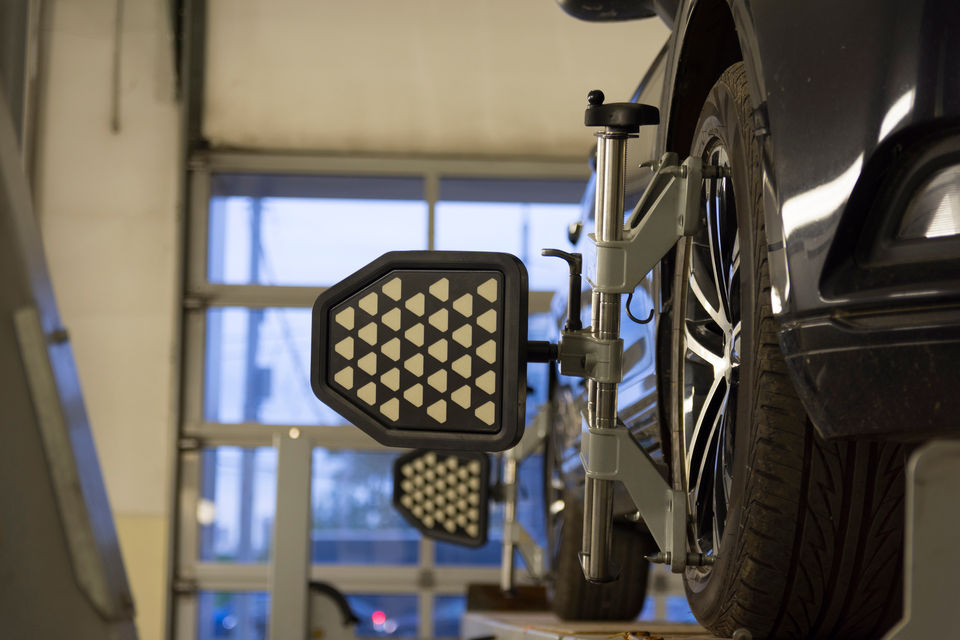
How Is Wheel Alignment Done? How Does It Work?
Did you ever wonder how your car glides smoothly on the road despite all the bumps and potholes? The secret lies in a well-executed wheel alignment.
If you’re curious about the process that keeps your vehicle moving flawlessly, you’re in the right place.
Let’s explore the process of wheel alignment and its importance.
How Does Wheel Alignment Work?
Wheel alignment is a precise process that requires careful adjustments of three main angles: camber, caster, and toe.
Let’s explore each of these angles to grasp the importance of proper alignment.
Camber
Camber refers to the angle of your car’s wheels relative to the vertical axis when viewed from the front or rear.
The camber is considered correct when the top of the wheels slightly tilts in towards the centre of your car. Maintaining the right camber directly influences tyre wear and stability during driving.
Caster
The caster angle is the angle of your steering axis relative to the vertical axis.
This angle is deemed correct when the top of the steering axis is slightly tilted backward. Proper caster alignment ensures better steering stability and self-centering capabilities.
Toe
Toe alignment is the measurement of the distance between the front and rear of your car’s wheels.
The ideal toe alignment is achieved when the front wheels are slightly closer together than the rear. Correct toe alignment prevents excessive tyre wear and allows for smoother handling.
How Is Wheel Alignment Done?
Wheel alignment requires specialised equipment and skilled technicians. Here’s a step-by-step breakdown of how it’s done:
- Elevate the car: The first step in the wheel alignment process involves raising the car on a hoist to remove the wheels.
- Attach the alignment machine: The alignment machine is then attached to the car, and the wheels are remounted securely.
- Measure the angles: Using advanced technology, the alignment machine measures the angles of each wheel and compares them to the manufacturer’s specifications.
- Adjust the angles: Based on the measurements, the technician makes precise adjustments to the camber, caster, and toe angles to bring them within the recommended range.
- Test drive: After the adjustments, the car is driven off the hoist, and a test drive is conducted to ensure that the alignment is accurate.
Importance Of Wheel Alignment
Improved Handling And Safety
Proper wheel alignment results in better handling and steering response. When your car’s wheels are aligned, it tracks straight and responds accurately to your steering inputs.
Prolonged Tyre Life
One of the most significant benefits of wheel alignment is the extended life of your tyres. When your wheels are correctly aligned, they wear evenly, reducing the risk of premature tyre failure.
Enhanced Fuel Efficiency
Maintaining the right wheel alignment can positively impact your car’s fuel efficiency. When your wheels are aligned correctly, there is less rolling resistance and drag on the tyres, leading to improved fuel economy.
Minimised Suspension Strain
Misaligned wheels can place unnecessary strain on your car’s suspension system. Over time, this strain can lead to costly repairs and affects the smoothness of your ride. Proper alignment mitigates such strain, ensuring your suspension functions optimally.
Conclusion
If you notice any signs of wheel misalignment, don’t ignore them. Consult a qualified mechanic and get them aligned promptly.
A small investment in regular wheel alignments can save you from potential headaches and costly repairs in the long run.
Keep your car on the right track!

Louis
I'm Louis, an engineer passionate about helping Australians choose better tyres for their vehicles!
